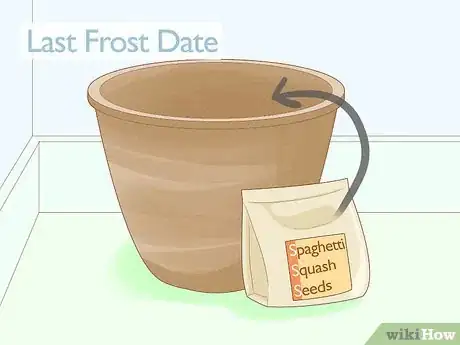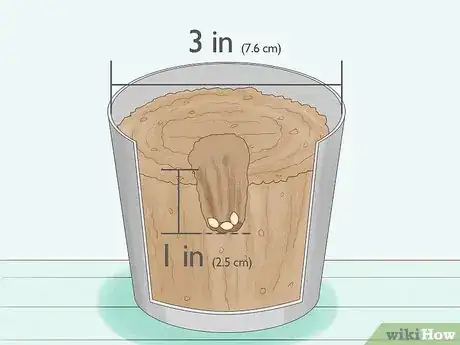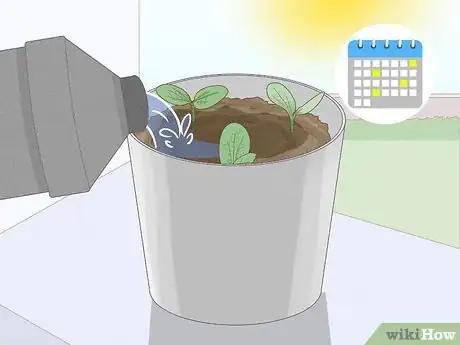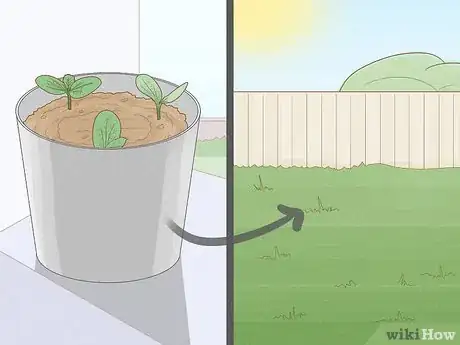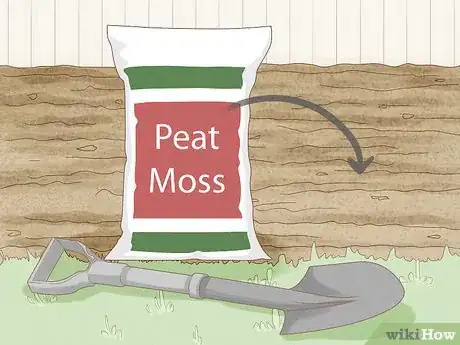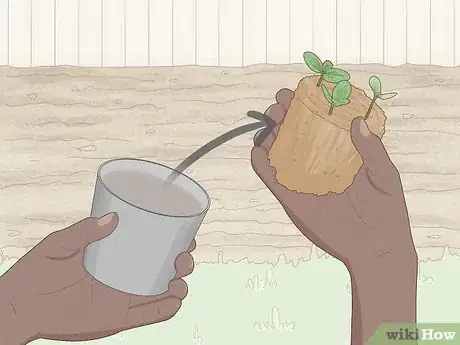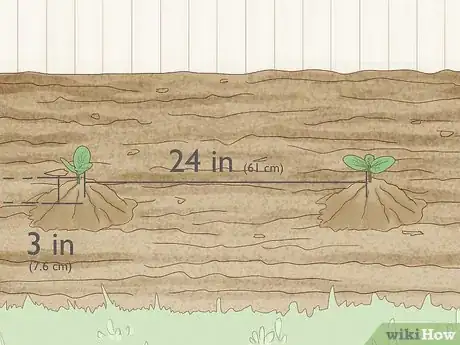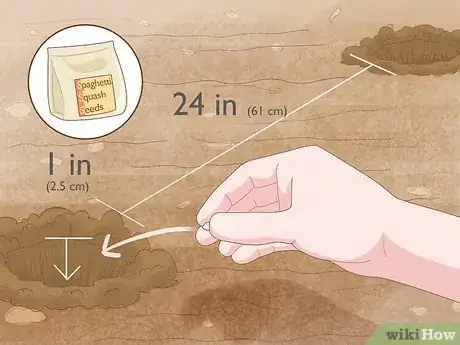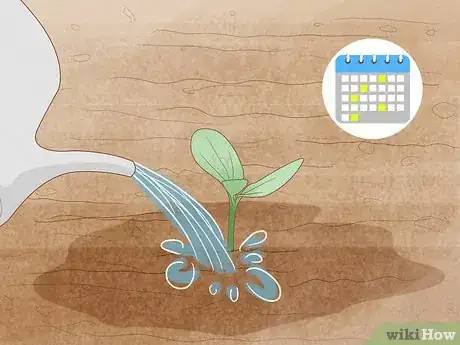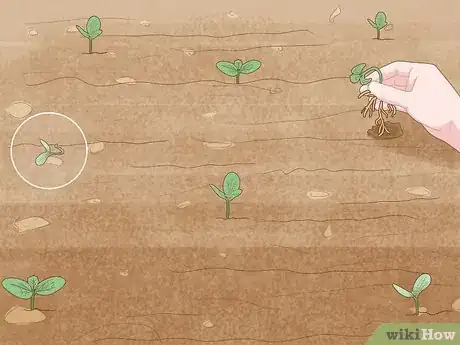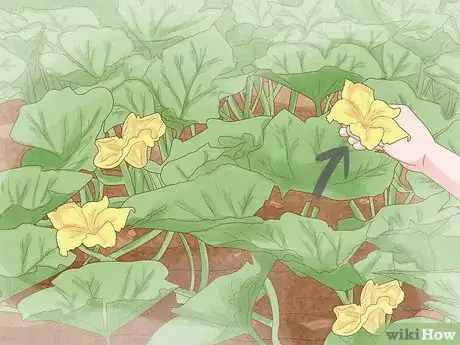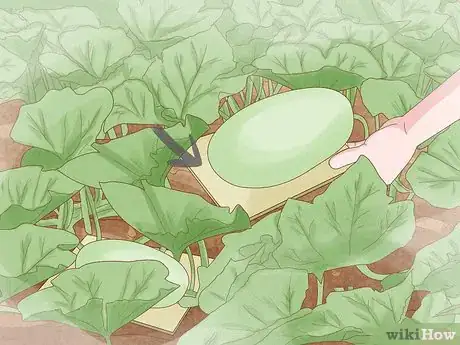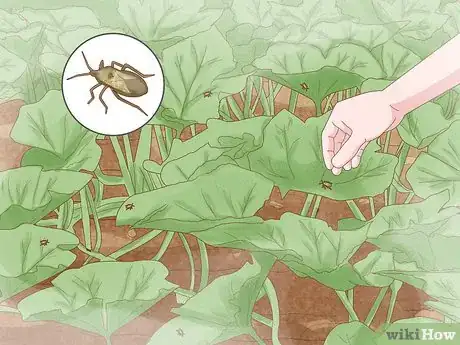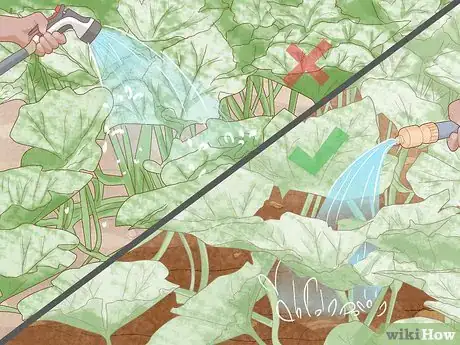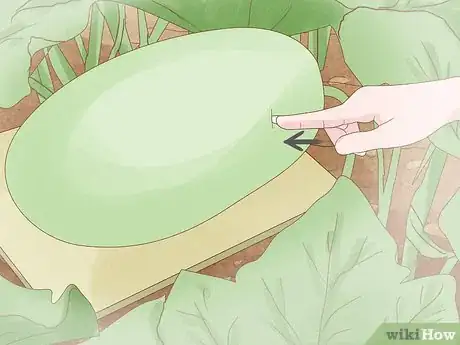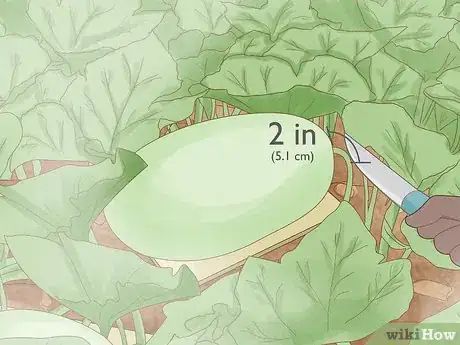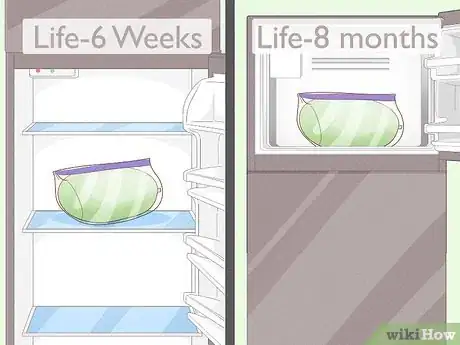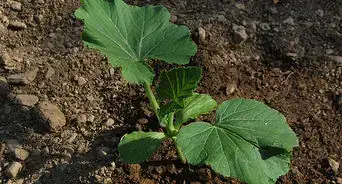This article was co-authored by Olivia Choong. Olivia Choong is a Plant and Gardening Specialist and the Owner of The Tender Gardener. With more than six years of experience, she specializes in gardening, permaculture, and self-sufficient and low-impact living practices. Her work has been featured in media outlets such as The Straits Times and Channel NewsAsia (CNA). Olivia holds a Bachelor of Mass Communications in PR and Journalism from Murdoch University.
There are 9 references cited in this article, which can be found at the bottom of the page.
wikiHow marks an article as reader-approved once it receives enough positive feedback. In this case, 100% of readers who voted found the article helpful, earning it our reader-approved status.
This article has been viewed 72,310 times.
The name of the spaghetti squash comes from its unique flesh. When cooked, the fibers give the squash distinctive strands that look a lot like orange spaghetti. Growing your own spaghetti squash is fairly easy, as long as you keep the seeds and plants warm. Using a nutrient-rich, slightly acidic soil or compost can help your plants grow more fruit. The growing season for spaghetti squash is long, but if you keep your plants happy, you will be rewarded with a harvest in the early fall.
Steps
Starting Seeds Indoors
-
1Plant seeds inside about a month before your local last frost date. Squash seedlings will grow large enough to be transplanted outside within a month. Make sure that any frosts will have passed by then.[1]
- Alternatively, you can move each seedling to a larger container indoors if you are worried about frost.
-
2Put seeds in a 3 in (7.6 cm) wide pot, about 1 in (2.5 cm) deep.[2] Choose an organic potting mix and add plant food that contains phosphorus and potassium to give your plants enough nutrients to get started. Place 3-4 seeds in each pot, all in the same hole, then water them so that the soil is damp all the way through.[3] [4]
- Squash seeds need to be covered in soil to sprout. Make sure they are around 1 in (2.5 cm) deep in the soil.
Advertisement -
3
-
4Water seeds and seedlings at least once a week. Water your seeds enough so that the soil is moist all the way through, but not wet.[7] Usually, you will need to water the seeds around once a week.[8]
- To check if your seeds or seedlings need more water, stick one finger into the soil, around one knuckle deep. If the soil feels dry, water it. This will help you avoid over-watering.
-
5Transplant seedlings outdoors when they have 2-3 leaves. A seedling is too delicate to transplant before it has leaves. Usually, it takes around 3-4 weeks for a seed to grow into a seedling that can safely be transplanted. Choose a sunny spot in your garden. Time your planting so that the soil has time to warm up after the last frost, for around 2 weeks. If the soil is too cold, the seedlings won't grow. [9]
- In most places, it's best to plant seeds in late April, with seedlings ready to transplant by early- to mid-May.
- Spaghetti squashes need around 100 days to fully mature. If your growing season is short, try warming up the soil by covering it with black plastic.
-
6Select an outdoor spot with nutrient-rich soil. Look for a soil with peat moss or shredded bark mixed in so that it drains well. For the best yield, look for a soil that is slightly acidic.[10]
- If you’ve had cool weather, you can lay black plastic down over the garden before planting to help warm up the soil.
-
7Slide the seedlings gently out of the pot. The roots of a seedling are very delicate, so it's important to be gentle with them. Slide the entire plant out of the pot with all of the dirt.[11]
- Be careful not to break the roots.
- Use the same soil and fertilizer you used in the pots.
-
8Place the seedlings into 3 in (7.6 cm) mounds in the soil. Make a 3 in (7.6 cm)-tall hill in the soil and create a hole in the middle for the seedling. Space the hills 24 to 36 inches (61 to 91 cm) apart. Place the seedling gently into the hole. Cover the roots loosely with soil.[12]
- Many squashes can be grown vertically to save space, but this isn’t the best idea with spaghetti squash. The fruits are too big and it is difficult to try to support them on the vine when hanging.
- Overcrowding squash plants will cause them not to bear fruit.
- Varieties that grow as a bush, like Orangetti or Tivoli, are more compact. Vining squash spreads out for several feet on each side.
Planting Spaghetti Squash Outdoors
-
1Plant in warm weather, when temperatures are around 65 °F (18 °C). Spaghetti squash needs a long growing season and warm temperatures, including warmth at planting time.[13] Wait until after the frost date passes to plant your seeds outdoors. Spaghetti squash can't withstand any frost.[14]
- Spaghetti squash can be grown in USDA hardiness zones 3-12. Check your zone at https://planthardiness.ars.usda.gov/phzmweb/interactivemap.aspx
- If you live in an area with a cooler climate, planting seeds indoors and then transferring the seedlings outdoors after the frost date passes is the best option.
-
2Choose a space that receives full sun. Squash needs around 6-8 hours of sunshine every day to thrive.[15] Look for a space in your garden with minimal shade to get a heartier crop.[16]
- Once your squash grows large leaves, they will shade the ground underneath them, which will prevent weeds from growing.
-
3Plant seeds 24 to 36 inches (61 to 91 cm) apart in rich compost. Plant seeds around about 1 in (2.5 cm) deep in well-rotted compost that is at least 4 in (10 cm) deep. If you don't have any compost on hand, choose an organic gardening soil that is well-draining. Soil with peat moss or bark mixed in drains well.[17]
- To get a good crop of squash, cultivate at least 4 spaghetti squash plants. This will provide enough male and female flowers for effective pollination.
-
4Water your squash seedlings around once a week. Water them so that the soil is moist 4 inches (10 cm) deep. Continue watering your spaghetti squash at least once a week to keep the soil moist.[18]
- If you live in a rainy area, you may not need to water your squash, as long as the soil stays moist.
-
5Pull out the weakest squash seedlings out after a few weeks. After around 6 weeks in the garden, some plants will start to thrive and grow quickly, while others will grow more slowly and may start to wilt. Pull up the plants that aren't doing as well so that you are left with the healthiest squash plants.[19]
Caring for Your Squash
-
1Remove any blossoms that your squash vines produce after summer. The blossoms won’t have time left for them to mature into fruit and the plant’s resources are better used growing the already-developing squash on the vine. [20]
- Simply pinch off flowers or use a pair of gardening shears to cut them off.
-
2Protect growing squash from rot with a tile under each fruit. Because the squash grows for the full length of the season, it can be prone to getting rot underneath where the fruit lays on the soil. Creating separation between the fruit and the soil helps prevent rot.[21]
- Anything flat and non-biodegradable will work. You can also try a coffee can lid.
-
3Remove any pests that attack your squash plants with your hands. The most common insect attackers are squash bugs, followed closely by the cucumber beetle. They are both big enough to be picked off by hand as soon as you see one. Check inside the blossoms as well as under the large leaves for insects. Keeping your squash plants fertilized and watered can help prevent pests.[22]
- Once established and growing well, a squash vine is quite large and can withstand a fair bit of insect damage without ill effects.
- Alternatively, you can use a food-safe pesticide to kill squash bugs early in the season, if they are causing the plant to wilt. Spray the pesticide under the leaves, where most of the bugs are. Do not use pesticide in the late summer or early fall, when the plant is close to fully grown.
-
4Prevent mildew from growing on the leaves by watering at the soil. Water your squash at the soil rather than spraying the leaves and blossoms. If the plants get mildewy after damp weather, spray them with a standard fungicide spray.[23]
- Mildew looks like a dusting of white powder on the leaves and it can effect your plant’s development and growth if it gets too heavy.
-
5Push your fingernail into the outside skin to tell if your squash is ready. The skin should be tough enough to withstand your nail. If it punctures, your squash need more time.[24]
- Depending on your climate, another sign is that you should harvest your squash when the vines start to wither.
-
6Cut the squash off of the vine when it is ready. Leave around 2 inches (5.1 cm) of stem attached to the squash, if possible. Handle the squash gently so that you don't bruise it.[25]
- Don't harvest the squash before it's ready, as it won't continue to mature after you cut it off of the vine.
-
7Store your squash at room temperature in a dry environment. A whole squash can be stored in the fridge for about 2 weeks before it starts to lose its texture. Moisture will quickly ruin a spaghetti squash, but barring dampness, it should keep for a few months.[26]
- For long term storage, you can freeze the cooked spaghetti squash up to 8 months.
Expert Q&A
-
QuestionCan you trellis spaghetti squash?
 Olivia ChoongOlivia Choong is a Plant and Gardening Specialist and the Owner of The Tender Gardener. With more than six years of experience, she specializes in gardening, permaculture, and self-sufficient and low-impact living practices. Her work has been featured in media outlets such as The Straits Times and Channel NewsAsia (CNA). Olivia holds a Bachelor of Mass Communications in PR and Journalism from Murdoch University.
Olivia ChoongOlivia Choong is a Plant and Gardening Specialist and the Owner of The Tender Gardener. With more than six years of experience, she specializes in gardening, permaculture, and self-sufficient and low-impact living practices. Her work has been featured in media outlets such as The Straits Times and Channel NewsAsia (CNA). Olivia holds a Bachelor of Mass Communications in PR and Journalism from Murdoch University.
Plant & Gardening Specialist Absolutely! You can definitely give your spaghetti squash a strong trellis and train its vines to climb. This helps promote good air circulation, which keeps the leaves dry and prevents powdery mildew growth.
Absolutely! You can definitely give your spaghetti squash a strong trellis and train its vines to climb. This helps promote good air circulation, which keeps the leaves dry and prevents powdery mildew growth. -
QuestionIt says to plant in hills; what does it mean by "hills"?
 Community Answer"Hills" means mounds of dirt. Pile up dirt until it forms a hill or a mound. When the squash is planted on a hill, it can drain water better.
Community Answer"Hills" means mounds of dirt. Pile up dirt until it forms a hill or a mound. When the squash is planted on a hill, it can drain water better. -
QuestionCan they be planted in sandy soil?
 Community AnswerWe have grown spaghetti squash in sandy soil in south Alabama. We apply a balanced slow-release fertilizer in a ring about a foot out from the seedlings and give plenty of water. Last year each vine produced an amazing 8 - 10 big squash. We don't use insecticides, so we did spend a lot of time crawling after squash bugs, but well worth it.
Community AnswerWe have grown spaghetti squash in sandy soil in south Alabama. We apply a balanced slow-release fertilizer in a ring about a foot out from the seedlings and give plenty of water. Last year each vine produced an amazing 8 - 10 big squash. We don't use insecticides, so we did spend a lot of time crawling after squash bugs, but well worth it.
References
- ↑ https://www.canr.msu.edu/resources/how_to_grow_pumpkin_and_squash
- ↑ Olivia Choong. Plant & Gardening Specialist. Expert Interview. 3 September 2021.
- ↑ https://extension.umn.edu/vegetables/pumpkins-and-winter-squash#controlling-weeds-236361
- ↑ Olivia Choong. Plant & Gardening Specialist. Expert Interview. 3 September 2021.
- ↑ Olivia Choong. Plant & Gardening Specialist. Expert Interview. 3 September 2021.
- ↑ https://extension.umn.edu/vegetables/pumpkins-and-winter-squash#controlling-weeds-236361
- ↑ Olivia Choong. Plant & Gardening Specialist. Expert Interview. 3 September 2021.
- ↑ https://extension.umn.edu/vegetables/pumpkins-and-winter-squash#transplanting-235711
- ↑ https://www.canr.msu.edu/resources/how_to_grow_pumpkin_and_squash
- ↑ https://www.canr.msu.edu/resources/how_to_grow_pumpkin_and_squash
- ↑ https://extension.umn.edu/vegetables/pumpkins-and-winter-squash#controlling-weeds-236361
- ↑ https://extension.umn.edu/vegetables/pumpkins-and-winter-squash#controlling-weeds-236361
- ↑ Olivia Choong. Plant & Gardening Specialist. Expert Interview. 3 September 2021.
- ↑ https://www.canr.msu.edu/resources/how_to_grow_pumpkin_and_squash
- ↑ Olivia Choong. Plant & Gardening Specialist. Expert Interview. 3 September 2021.
- ↑ https://www.canr.msu.edu/resources/how_to_grow_pumpkin_and_squash
- ↑ https://extension.umn.edu/vegetables/pumpkins-and-winter-squash#controlling-weeds-236361
- ↑ https://extension.umn.edu/vegetables/pumpkins-and-winter-squash#watering-236360
- ↑ https://extension.umn.edu/vegetables/pumpkins-and-winter-squash#watering-236360
- ↑ https://www.canr.msu.edu/resources/how_to_grow_pumpkin_and_squash
- ↑ https://extension.umn.edu/vegetables/pumpkins-and-winter-squash#common-problems-236362
- ↑ https://www.almanac.com/pest/squash-bugs
- ↑ https://www.almanac.com/pest/squash-bugs
- ↑ https://extension.umn.edu/vegetables/pumpkins-and-winter-squash#harvest-and-storage-236365
- ↑ https://web.extension.illinois.edu/veggies/wsquash.cfm
- ↑ https://extension.umn.edu/vegetables/pumpkins-and-winter-squash#harvest-and-storage-236365
About This Article
If you’d like to grow your own spaghetti squash, start by planting the seeds in large containers, about a month before your last local frost date. Place about 3 seeds in each pot. Once the threat of frost has passed, transplant the squash seedlings outdoors. Dig a loose hole and slide the entire contents of the pot, including all of the seedlings, into the hole. Pat the remaining dirt into a hill around the plant’s base and water the soil well. For tips on caring for your growing spaghetti squash plant, including how to harvest it, keep reading!
